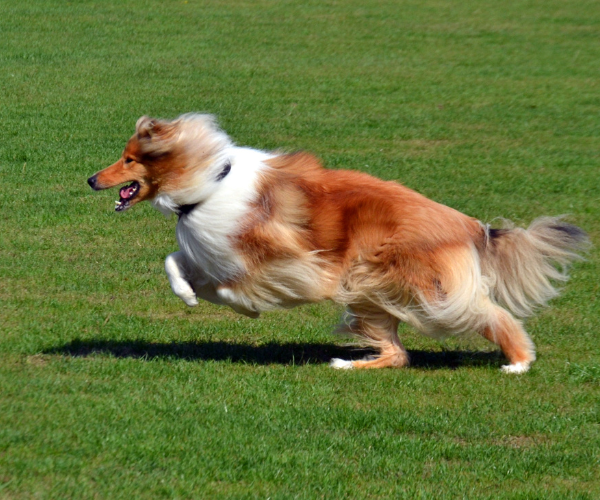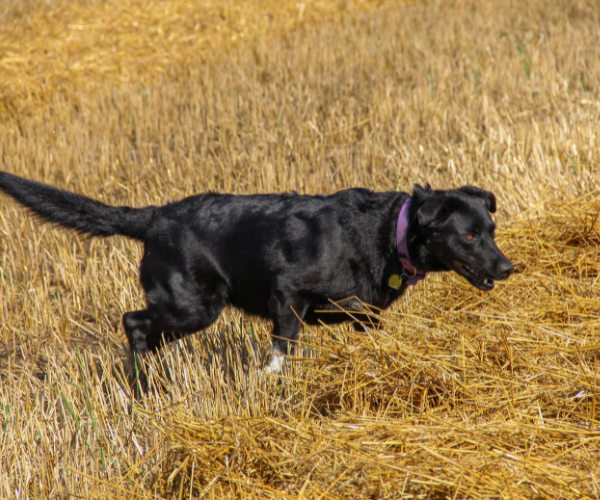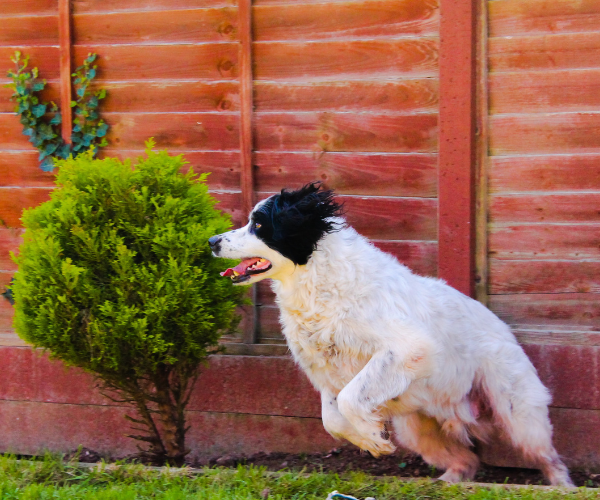Why Does My Dog Pounce? 6 Reasons Explained
Why Does My Dog Pounce? 6 Reasons Explained

Vet Reviewed

By: Sarah Hodgson
January 19, 2024
Table of Contents
I love watching dogs play but sometimes it could be quite odd. Whether it's pouncing on toys, beds, or even other animals, why do they do this?
In this article, we will explore the meaning behind dog pouncing and dive into six reasons why dogs pounce.
Let's dive in!
Quick Answer:
Pouncing can serve various purposes, including communication, play, predatory behavior, social interaction, excitement, and energy release. By recognizing these reasons, you can decipher your dog's intentions and respond appropriately.
What Is Dog Pouncing?
Before we dive into the reasons behind dog pouncing, let's clarify what exactly it means.
Pouncing is a behavior commonly seen in dogs where they leap, lunge, or bounce towards an object or another living being. It often involves a quick, sudden movement followed by a playful or curious interaction. Pouncing can occur in various contexts and understanding the underlying motivations will shed light on your dog's behavior.
There are even dog breeds that are known for their pouncing.
6 Reasons Why Dogs Pounce
1. Pouncing as a Form of Communication
Dogs are highly skilled at using body language to communicate with humans and other animals. Pouncing can be their way of conveying a message or expressing their intentions. For example, if your dog pounces on you while wagging their tail and displaying a playful demeanor, they may be inviting you to engage in a game of chase or simply seeking attention. Understanding their body language is key to interpreting their communication accurately.

2. Pouncing as a Form of Play
Play is an integral part of a dog's life, and pouncing is often a playful behavior. Just like children, dogs enjoy interactive games that stimulate their minds and bodies. Pouncing allows them to engage their hunting instincts while having fun. It's not uncommon to see dogs pouncing on toys, mimicking the act of capturing prey. This playful behavior is a natural and healthy way for dogs to expend energy and satisfy their curiosity.
3. Pouncing as a Predatory Behavior
Despite living in our homes, dogs still possess the instincts of their wild ancestors. Pouncing is inherently rooted in their predatory nature. When they see a moving object or small animal, their instincts may trigger the urge to pounce. This behavior is particularly prevalent in breeds with high prey drive, such as terriers or hounds. While it may seem alarming, it's essential to remember that this behavior is instinctual and can be managed through appropriate training and redirection.
4. Pouncing for Social Interaction
Dogs are social animals, and pouncing can be a way for them to interact with their human companions or other dogs. It can be a display of affection, an invitation to play, or an attempt to establish dominance. Pouncing on your feet or playfully nipping your hands can be a sign of their desire for social engagement. However, it's crucial to establish boundaries and teach your dog appropriate ways to interact to prevent any unintended negative consequences.
5. Pouncing for Excitement
Dogs are known for their boundless enthusiasm, and pouncing can be an expression of their excitement. When they see something they find stimulating or anticipate an exciting event, they may exhibit this behavior. For example, if you grab their leash before a walk, their excitement may manifest as pouncing. While it may seem challenging to control their exuberance, consistent training and redirecting their energy towards appropriate outlets can help manage this behavior effectively.
6. Pouncing for Releasing Energy
Just like humans, dogs need regular physical exercise to maintain their physical and mental well-being. Pouncing can be a way for dogs to release pent-up energy. If they haven't had sufficient exercise or mental stimulation, they may resort to pouncing as a means of expending their excess energy. Ensuring your dog receives adequate exercise through walks, play sessions, or interactive toys can help alleviate this behavior.
Signs of Aggression in Dog Pouncing
While pouncing is generally harmless, it's crucial to be aware of signs of aggression associated with this behavior as with anything else dogs do.
Aggressive pouncing often involves stiff body posture, growling, snarling, or biting. If your dog displays these signs during pouncing, it may indicate a more significant issue that requires professional intervention.

Why Do Dogs Pounce on Toys?
One common scenario where dogs frequently engage in pouncing is when playing with toys.
Pouncing on toys mimics the act of capturing prey, allowing dogs to satisfy their natural hunting instincts. It provides mental stimulation, exercise, and a sense of accomplishment. By engaging in this behavior, dogs also release excess energy, reducing the likelihood of destructive behavior.
Why Do Dogs Pounce on the Bed?
If you've ever found your dog pouncing on your bed or other furniture, you may wonder why they engage in this behavior.
Dogs often view their owners' beds as comfortable and safe spaces. Pouncing on the bed can be a way for them to mark their territory or establish a sense of ownership. It can also be a display of affection or an invitation to play. While some owners may find this behavior endearing, it's essential to establish rules and boundaries to prevent any negative consequences, such as soiling or damage to furniture.
How To Get Your Dog To Stop Pouncing
If your dog's pouncing behavior becomes problematic or you simply prefer them not to engage in this behavior, there are several ways you can employ to discourage it:
- Training and redirection: Teach your dog alternative behaviors, such as "sit" or "stay," and reward them for complying. Redirect their attention to appropriate toys or activities that satisfy their need for mental and physical stimulation. Sign language can be a great way to teach your dog commands.
- Consistency and reinforcement: Be consistent with your expectations and reinforce desired behaviors. Reward your dog when they exhibit appropriate behavior and ignore or redirect them when they engage in pouncing.
- Exercise and mental stimulation: Ensure your dog receives adequate exercise and mental stimulation to prevent excessive energy buildup. Regular walks, interactive toys, and training sessions can help redirect their energy towards positive outlets.
- Professional guidance: If your dog's pouncing behavior persists or becomes aggressive, seek guidance from a certified dog trainer or behaviorist. They can assess the underlying causes and provide customized strategies to address the issue effectively.
The Bottom Line
So there you have it, there are many reasons behind why dogs pounce. Whether it is to communicate, play, exhibit predatory behavior, seek social interaction, express excitement, or release energy, pouncing is an integral part of a dog's repertoire of behaviors. With patience, consistency, and positive reinforcement, you can help your dog become a well-rounded and happy member of your family.

Subscribe to Petfluence!
Get updates on the latest posts and more from Petfluence straight to your inbox.